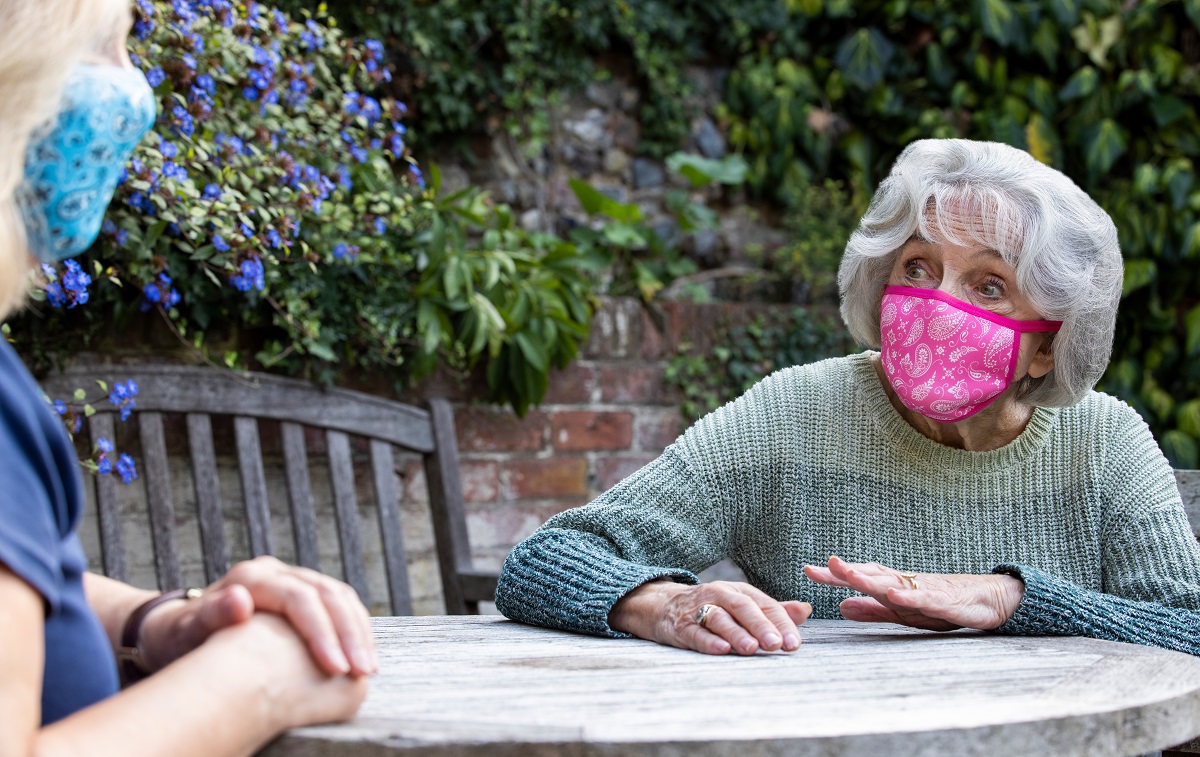Zoe Harris, explains how the challenges she faced while caring for her husband with dementia, prompted her to find a simple yet effective solution, in the form of special care charts.
‘In the period between 2006 and 2010 my husband Geoff had declined from being fit and active and still working full time, to a state where he was profoundly confused and unable to wash, dress or feed himself. I expected to continue caring for him at home, but I needed a break, and our two teenage daughters needed a bit of my time as well, so I booked him into a care home for a respite weekend. It proved disastrous.
This photo of Geoff was taken a few months before he suffered a rapid decline and spent the last thirteen months of his life in a care home.‘I told the care home he drank his tea black, but the information didn’t filter through to all the staff, so he refused the milky tea he kept being offered and he ended up severely dehydrated. He would not have been able to identify his discomfort as thirst, nor explain what he would prefer to drink, so when I went to collect him on Monday he was virtually comatose.
‘As anyone who cares for a person with dementia will know, they rarely make a full recovery from setbacks like that, and Geoff’s mental and physical state meant it was impossible for me to take him home. He was transferred to the local dementia assessment ward and after three months I had little alternative but to follow the advice I was being given and find him a place in a care home.
‘This time I made sure they knew about the things that would help carers get to know him, but it made no sense to me to then see it all filed away on the shelf. It needed to be out there, where everyone interacting with him would see it.
‘So I started scribbling notes and sticking them on his bedroom wall, and then I added some symbols to keep it all a bit light hearted and catch the eye of the carers (I subsequently discovered that we process images 60,000 times faster than words, so there turned out to be science behind the idea). It quickly made sense to turn it into a wall chart and give it a wipe-clean surface so that it could be updated whenever necessary, and I started to see the carers taking note and acting on the information that was now available to them.
‘When I created that first care chart to help with my husband’s care, the last thing I intended to do was develop a commercial product. I’d looked everywhere for some method of being able to share the information I knew would help carers get to know him and understand his needs, and found nothing. I had learned enough about the challenges carers face in trying to care for someone, to know that a reliable way of providing them with some background and what matters to the person had to make their job easier.
Dementia soon robbed Geoff of the quick thinking and agility required for his beloved dinghy sailing.‘The care home manager asked me to produce some more for her other residents. I agreed on the basis that we would run a trial. I spent the next six months getting feedback from residents and families before starting to offer them to other care homes and the rest, as they say, is history! Variations of that original chart are now in use in over 900 care homes as well as numerous individual’s homes and hospitals.
‘It took me a while to realise that the chart was doing a lot more than simply sharing facts. It was empowering carers to develop a relationship with Geoff. I still remember the time a carer came in to Geoff’s room when I was there and saw the chart for the first time. “Well I never,” she said, reading the notes about Geoff’s family, “I never knew you had seven grandchildren Geoff!” She got a big beaming smile from him; he adored all of his children and grandchildren.
The charts are now in use in over 900 care homes as well as numerous hospitals and individual’s homes.‘Geoff died in April 2011, but continuing the work I had begun felt like something good could come out of the dreadful last years of his life, and I had already had enough enthusiastic feedback to know that a simple tool like a care chart could have a significant impact on countless further lives.
‘I went on to develop further variations for different environments. There are now eight different kinds of charts, a number of which are suitable for helping to care for a person in their own home. The challenges are exactly the same as in a care home, as soon as paid carers or even helpful friends get involved, and when a person cannot express their needs.
‘I am proud to have had my work recognised with a number of awards, and delighted that the charts are now going to be available via unforgettable.org. I am continuing to work on further ideas, all with the common theme of improving the quality of life of carers and those they care for.’
Care charts empower carers to develop a relationship.
SHARE
Explore more




